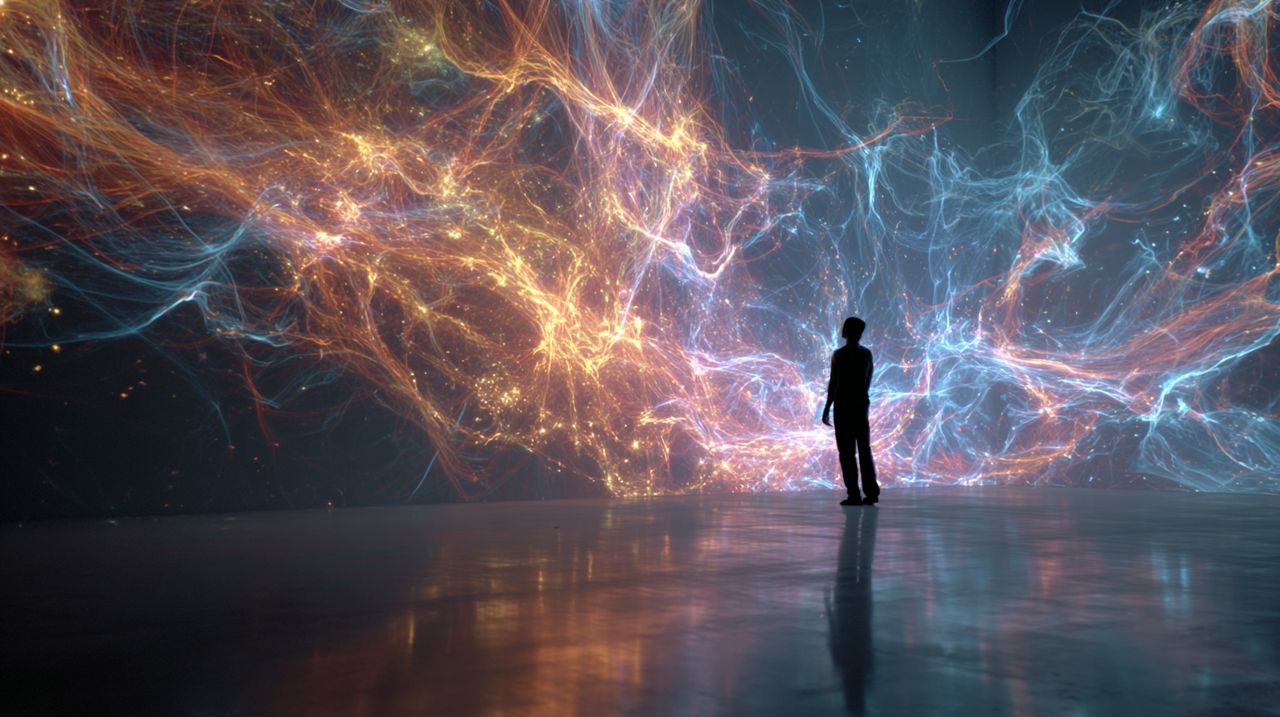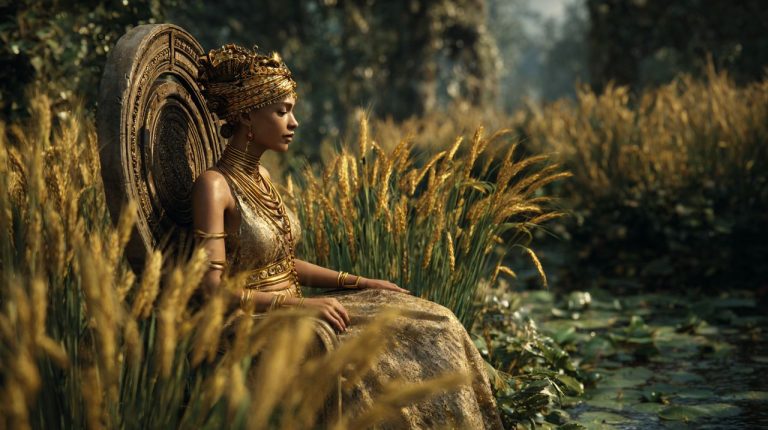Artificial Intelligence Reshaping Creative Industries
Artificial Intelligence in Creativity: Reshaping Art, Design, and Imagination
Artificial intelligence (AI) is no longer a futuristic concept confined to science fiction; it has profoundly integrated itself into the very fabric of creative disciplines. This technological evolution represents a significant paradigm shift in how artistic and design processes are conceived and executed, influencing fields as diverse as graphic design, music composition, digital art, and narrative writing.
Our aim here is to systematically clarify AI’s multifaceted role, moving beyond mere automation to explore its potential for **innovation and collaboration**. We will examine both the extraordinary opportunities it presents and the compelling questions it raises for creators and industries worldwide, providing a structured understanding of this transformative era.
The Foundational Impact: AI as an Augmentation Tool
At its most fundamental level, artificial intelligence serves as an unparalleled **augmentation tool** for creative professionals. It acts as a highly efficient assistant, meticulously handling repetitive and time-consuming tasks that traditionally consume significant creative energy.
By delegating these routine operations to AI, artists and designers reclaim invaluable time. This strategic reallocation allows them to dedicate greater focus to conceptual development, experimental innovation, and the unique, human-centric aspects of their craft. The result is a shift from the mundane to the truly meaningful: enhanced creative output.
Streamlining Creative Workflows
The integration of AI into creative workflows is transforming how projects are initiated and completed. From initial ideation to final production, AI tools are designed to optimize efficiency, allowing creators to accelerate various stages of their work.
Consider the process akin to a highly organized workshop, where specialized digital assistants manage the preparatory work and technical adjustments. This frees the master artisan to concentrate on the vision and intricate details that define their unique style.
Automated Task Acceleration
AI’s capacity for automated task acceleration is evident across a spectrum of creative disciplines. Its capabilities extend to:
- Content Generation: Rapidly producing initial drafts, summarizing extensive research, or generating diverse textual variations.
- Image Manipulation: Effortlessly performing advanced operations such as upscaling resolutions, applying sophisticated style transfers, or generating variations of existing visual assets.
- Audio Production: Assisting with precise mastering, intricate mixing, and sound design, ensuring optimal auditory quality.
- Video Editing: Automating time-intensive tasks like scene detection, color grading, and even initial cut assembly, thereby streamlining post-production workflows.
Beyond Automation: AI as a Generative Collaborator
While AI excels at optimizing existing processes, its true revolutionary potential lies in its capacity for **generative collaboration**. This extends beyond mere efficiency, enabling the creation of entirely novel ideas and the exploration of previously uncharted artistic frontiers.
Generative AI models are evolving from sophisticated tools into dynamic creative partners. They are capable of producing outputs that are not simply variations, but genuinely original content, pushing the conceptual boundaries of art and design.
Sparking Novel Ideas and Artistic Frontiers
Consider the profound impact of systems that can autonomously compose original musical pieces, generate diverse and intricate artistic images from concise text prompts, or even assist in complex scriptwriting by proposing innovative plot twists and compelling character dialogues.
This interactive relationship with AI acts as a powerful catalyst, igniting fresh perspectives and paving the way for entirely new modalities of artistic expression. It’s akin to having an infinite brainstorming partner, capable of exploring vast possibility spaces at unprecedented speed.
The Human-AI Creative Synergy
AI, when viewed through this collaborative lens, transcends its function as a mere task-completion tool. It emerges as a dynamic partner capable of inspiring, challenging, and ultimately expanding the very boundaries of human creativity.
This synergy is not about replacement but about **amplification**. Human intuition, emotional depth, and conceptual understanding merge with AI’s computational power and pattern recognition. The result is a creative output that often surpasses what either could achieve in isolation, leading to a richer, more diverse artistic ecosystem.

Navigating the Ethical and Practical Landscape
As with any transformative technology, AI’s increasing integration into creative industries necessitates a thoughtful examination of its ethical implications and practical challenges. These are not merely peripheral concerns but core issues that demand proactive engagement from creators, policymakers, and the public.
Understanding these considerations is crucial for fostering a responsible and sustainable creative ecosystem where human and artificial intelligence can coexist productively.
Intellectual Property and Authorship Challenges
One of the most immediate and complex challenges revolves around **authorship and copyright**. When an AI system generates a piece of art or music, who is the rightful owner? Is it the programmer, the user who prompted the AI, or the AI itself?
These questions are largely unresolved within existing legal frameworks, sparking crucial debates over intellectual property rights. The current legal vacuum creates uncertainty, potentially hindering innovation or leading to disputes regarding ownership and monetization.
Authenticity, Bias, and Societal Implications
Beyond legalities, AI-generated content raises profound questions about **authenticity and inherent value**. A common concern is whether AI-influenced art diminishes the distinctiveness of human ingenuity or the perceived worth of artistic expression.
Furthermore, the potential for **job displacement** among human artists and designers is a frequent and valid topic of discussion. While AI augments, it also automates, leading to shifts in labor markets that require strategic planning and adaptation.
Crucially, AI models are trained on vast datasets, which can inadvertently **perpetuate existing biases** present in the training data. This necessitates rigorous ethical oversight in their development and deployment to ensure fairness, equity, and the avoidance of reinforcing harmful stereotypes within creative outputs.
The Future Trajectory: A Balanced Integration
The trajectory of AI’s involvement in creative fields indicates an unwavering expansion and evolution. The path forward demands a strategic and **thoughtful integration**, coupled with proactive adaptation from individual creators and established institutions alike.
This is not a passive process; it requires deliberate choices about how we harness AI’s capabilities to enrich, rather than diminish, human artistic endeavors.
Augmenting Human Ingenuity
The pivotal insight for the future lies in focusing on how human ingenuity can be profoundly **augmented by AI**, rather than being supplanted. This perspective champions the idea that AI serves as a powerful enhancer, enabling creators to achieve new levels of expression and efficiency.
It involves fostering novel forms of artistic output and operational efficiencies that are built upon, and amplify, our unique human capabilities—our emotional intelligence, subjective interpretation, and capacity for truly original conceptual thought. This ensures that the human element remains at the core of the creative process.
Strategic Adaptation for Creators
To navigate this evolving landscape successfully, a **balanced approach** is instrumental. This entails prioritizing genuine human-AI collaboration, where the strengths of both are leveraged synergistically. Furthermore, it demands continuous, proactive ethical considerations throughout the development and application of AI tools.
By embracing these principles, we can collectively shape the next transformative era of artistic and creative endeavors, ensuring that technology serves as a powerful ally in the pursuit of imagination.
💡 Frequently Asked Questions
AI is profoundly reshaping how artistic and design processes unfold across various creative fields, from graphic design and music composition to writing and visual arts, presenting both opportunities and challenges for creators.
AI-powered tools act as creative assistants by accelerating routine tasks, such as content generation, image manipulation, audio production (mastering/mixing), and video editing (scene detection/color correction), thereby freeing up time for conceptual development and innovation.
AI serves as a creative collaborator, sparking new ideas and artistic frontiers. Generative AI models can compose original music, create diverse images from text prompts, and assist in scriptwriting, leading to fresh perspectives and entirely new forms of artistic expression.
Important considerations include unresolved questions of authorship and copyright, concerns about the authenticity and value of AI-influenced art, the potential for job displacement, and the necessity of addressing bias and ethics in AI model development and deployment.







